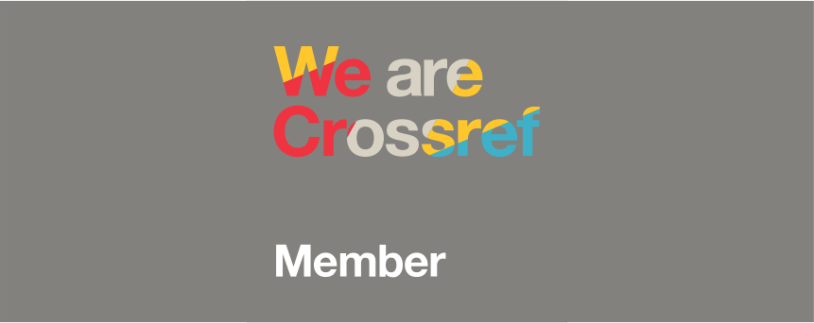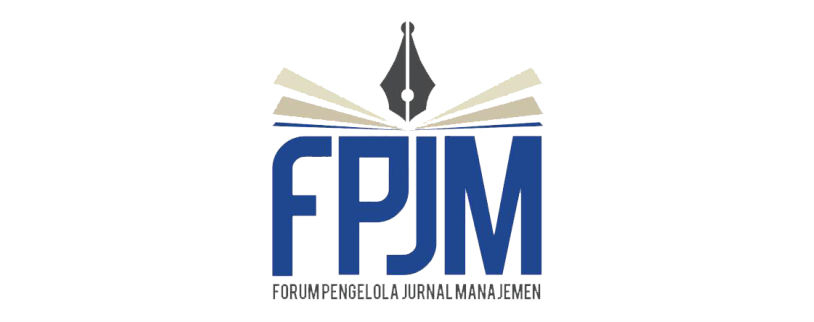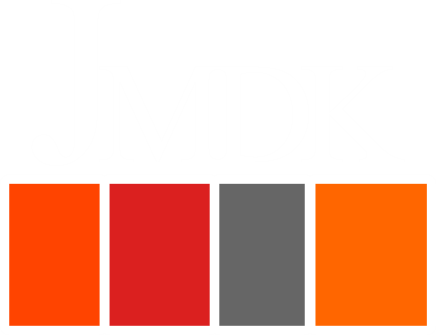Determinants of Financial Inclusion among Nigerian MSMEs: The Roles of Push Factors
DOI:
https://doi.org/10.26905/jmdk.v13i1.15573Keywords:
Nigeria, Push Factors, MSME, Financial InclusionAbstract
Financial inclusion of Micro, Small, and Medium Enterprise (MSME) owners has been identified as a vital component of the global development agenda, notably emphasized during the G20 Seoul Summit in 2020. It plays a critical role in fostering economic growth, alleviating poverty, and strengthening financial stability. However, many MSME owners remain financially excluded due to their inherent characteristics and the perceived unattractiveness of financial services. This issue is particularly prevalent in North Central Nigeria, where empirical studies are still limited. This study aims to examine the impact of key push factors on the financial inclusion of MSME owners in North Central Nigeria. The specific objectives were to investigate the effect of financial literacy, size of business, level of education, risk preference, and social network on the financial inclusion of MSME owners in this region. Using a survey design, data were collected from a stratified random sample of 435 respondents, drawn from a population of 11,607 MSME owners. The sample size was determined using the Krejcie and Morgan formula (1970), and data were analyzed using Partial Least Squares Structural Equation Modeling (PLS-SEM). The results revealed that all five push factors have a significant positive impact on financial inclusion. The study recommends that government initiatives should prioritize financial literacy programs to enhance MSME owners' awareness and engagement with financial institutions.
Downloads
References
Adekunle, A. O., Bekun, F. V., Gbadebo, A. D., & Akande, J. O. (2023). Empirical analysis of South African’s urbanization growth and export demands: implications for environmental sustainability. Environmental Science and Pollution Research, 30(47), 104687–104696. https://doi.org/10.1007/s11356-023-29570-x
Adekunle, A. O., Gbadebo, A. D., Akande, J. O., Yoshifumi, H., & Ndanusa, M. M.-N. (2023). Dynamics of capital flight components and domestic investment in Nigeria. Asian Economic and Financial Review, 13(7), 515–532. https://doi.org/10.55493/5002.v13i7.4803
Adekunle, S. A. O. (2024). Public Expenditure and Poverty Interdependence: Evidence from Nigeria. Pakistan Journal of Life and Social Sciences (PJLSS), 22(2). https://doi.org/10.57239/PJLSS-2024-22.2.00264
Adisty, K. . A. J. (2020). Financial literacy and retirement preparation in the Netherlands. Journal of Pension Economics and Finance, 2(3), 527–545.
Akintola, H. O. (2019). Understanding disparities in transplantation: Do social networks provide the missing clue? American Journal of Transplantation, 1(3), 472–476.
Akudugu, M. A. (2023). The determinants of financial inclusion in Western Africa: Insights from Ghana. Research Journal of Finance and Accounting, 4(8), 1–9.
Alexander, M., Kim, S. Y., & Cheng, H. (2020). Update 2020: management of non-small cell lung cancer. Lung, 198(6), 897–907.
Amos, I. (2023). The theory of planned behavior. . . Organizational Behavior and Human Decision Processes, 1(2), 179–211.
Arora, R. U. (2018). Measuring financial access. Griffith University, Discussion Paper in Economics, 1(1), 1–21.
Azzara, K. (2020). Attitudes, Personality Factors and Household Debt Decisions: A Study of Consumer Credit. Personality Factors and Household Debt Decisions: A Study of Consumer Credit (June 20, 2010.
Azure, B. (2021). The importance of subjective norms for people who care what others think of them. . Psychology & Health, 20(1), 53. – 62.
Babatunde, A. A. (2024). Demand side factors and financial inclusion: The moderating role of financial self-efficacy. Copernican Journal of Finance & Accounting, 13(2), 29–45.
Babatunde, A. A. (2025). Financial literacy, infrastructural facility and financial inclusion of MSMEs owners. . Journal of Business Management and Accounting, 15(1), 79–90.
Bandura, A. (2022). Cultivating competence, self-efficacy, and intrinsic interest through proximal self-motivation. 41(3),. Journal of Personality and Social Psychology, 41(3), 586–594.
Bartlett III, R. P., & Morse, A. (2021). Small-business survival capabilities and fiscal programs: Evidence from Oakland. Journal of Financial and Quantitative Analysis, 56(7), 2500–2544.
Ben-Caleb, E., Faboyede, S., Olusanmi, O., Oyewo, B., Fakile, S., Adegboyegun, A. E., & Ademola, A. (2019). Financial literacy: A panacea to poverty reduction in Nigeria. International Journal of Civil Engineering and Technology, 10(2), 301–309.
Benerjee, Y. , K. O. , & Z. S. (2015). Determinants of demand for microcredit among the rural households in South-Western States, Nigeria. International Journal Business Management, 2(3), 41–48.
Cassor, P. (2016). Time, temporality and consumer behaviour: A review of the literature and implications for certain financial services. . European Journal of Marketing, , 2(2), 993–1009.
Central Bank of Nigeria. (2022). National Financial Inclusion Strategy (Revised).
Cheng, L. (2020). Determinants of measuring financial inclusion: Explaining variation in use of financial services across and within countries. Economic Activity, 10(2), 279–321.
Demirguc-Kunt, A. , & K. L. (n.d.). Measuring financial inclusion: The Global Findex Database.
F. Hair Jr, J., Sarstedt, M., Hopkins, L., & G. Kuppelwieser, V. (2014). Partial least squares structural equation modeling (PLS-SEM) An emerging tool in business research. European Business Review, 26(2), 106–121.
Gbadebo, A. D., Bekun, F. V., Akande, J. O., & Adekunle, A. O. (2025). Defence spending and real growth in an asymmetric environment: Accessing evidence from a developing economy. International Journal of Finance & Economics, 30(2), 1372–1389. https://doi.org/10.1002/ijfe.2966
Gebrehiwot, N. Z., Strucken, E. M., Aliloo, H., Marshall, K., & Gibson, J. P. (2020). The patterns of admixture, divergence, and ancestry of African cattle populations determined from genome-wide SNP data. BMC Genomics, 21, 1–16.
Jaiswal, V., Saurabh, P., Lilhore, U. K., Pathak, M., Simaiya, S., & Dalal, S. (2023). A breast cancer risk predication and classification model with ensemble learning and big data fusion. Decision Analytics Journal, 8, 100298.
Khan, M. A., Khan, M. A., Ahmed, M., & Khan, K. (2022). Environmental consequences of financial development in emerging and growth-leading economies: A multidimensional assessment. Borsa Istanbul Review, 22(4), 668–677.
Kilduff, M., Liu, L., & Tasselli, S. (2023). A connected world: social networks and organizations. Cambridge University Press.
Krejcie, R. V., & Morgan, D. W. (1970). Determining Sample Size for Research Activities. Educational and Psychological Measurement, 30(3), 607–610. https://doi.org/10.1177/001316447003000308
Kuada, J. (2019). Financial inclusion and the sustainable development goals. In Extending financial inclusion in Africa (pp. 259–277). Elsevier.
Morgan, K. (1970). Sample size determination using Krejcie and Morgan table. Kenya Projects Organization (KENPRO), 38, 607–610.
Morgan, P., & Pontines, V. (2014). Financial stability and financial inclusion.
Oke, D. F., & Adamson, T. W. (2023). Demand and supply-side determinants of financial inclusion: A case study of micro, small and medium enterprises in southwest Nigeria. Review of Socio-Economic Perspectives, 8(2), 61–73.
Rahmati, F., Dehshiri, M., Simbar, R., & Keshishyan Siraki, G. (2021). How Identity Affects Iran-European Union Relations (2003-2020). International Studies Journal (ISJ), 18(3), 77–94.
Raphael, J., & Spurgeon, T. (2003). Stan Lee and the rise and fall of the American comic book. Chicago Review Press.
Shoimah, S., Muhajir, A., & Rosyid, M. (2024). The influence of entrepreneurial spirituality and social media adoption on the sustainability of MSME performance mediated by innovation capability (Survey on MSMEs in the Tourism Area Sunan Drajat Lamongan). KnE Social Sciences, 294–306.
Sholikin, A., & Sena, N. K. M. (2024). Promoting transparency and accountability in the oil and gas extractive industry sector for sustainable development in Bojonegoro Regency. Jurnal Ilmu Administrasi: Media Pengembangan Ilmu Dan Praktek Administrasi, 21(2), 197–208.
Tuesta, H. (2019). Self‐efficacy perspective on achievement behavior. Educational Psychologist, 1(1), 48–58.
Wang, W., Ning, Z., Shu, Y., Riti, M.-K. J., & Riti, J. S. (2023). ICT interaction with trade, FDI and financial inclusion on inclusive growth in top African nations ranked by ICT development. Telecommunications Policy, 47(4), 102490.
Whyley, N. , & S. B. (2018). Age and health care beliefs: Self-efficacy as a mediator of low desire for control. Psychology and Aging, , 2(1), 113–138.
Published
Issue
Section
License

This work is licensed under a Creative Commons Attribution-ShareAlike 4.0 International License.
Authors who publish with this journal agree to the following terms:
(1)Â Copyright of the published articles will be transferred to the journal as the publisher of the manuscripts. Therefore, the author confirms that the copyright has been managed by the journal.
(2) Publisher of Jurnal Penelitian is University of Merdeka Malang.
(3) The copyright follows Creative Commons Attribution–ShareAlike License (CC BY SA): This license allows to Share — copy and redistribute the material in any medium or format, Adapt — remix, transform, and build upon the material, for any purpose, even commercially.












